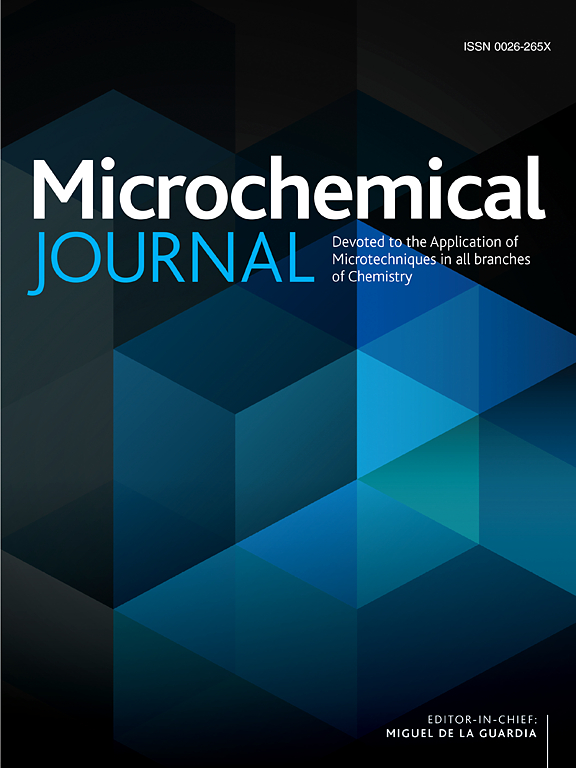Low temperatures and concentrations ethylene glycol sensing based on ultrathin graphene oxide-decorated CuO nanosheets
IF 4.9
2区 化学
Q1 CHEMISTRY, ANALYTICAL
引用次数: 0
Abstract
Ethylene glycol is a toxic contaminant, hence the monitoring of its vapor is crucial for environmental safety and human health. In this study, CuO/GO ultrathin nanosheet composites were successfully synthesized via a one-step chemical precipitation method, and subsequently used for the detection of low concentrations of ethylene glycol at low temperatures. The test results indicate that CuO/0.7GO shows a response of 39.5 at 110 °C for 10 ppm ethylene glycol, which is 19 times greater than that of CuO, and the optimal operating temperature reduced by 20 °C compared to CuO. Notably, CuO/0.7GO still demonstrates a response of 7.02 for 1 ppm ethylene glycol. Furthermore, the CuO/0.7GO sensor exhibits significant selectivity, repeatability, and long-term stability toward ethylene glycol. The morphology, microstructure, and elemental composition of the materials were characterized by XRD, SEM, TEM, EDX, FT-IR, XPS, and UV–Vis. Finally, the gas sensing mechanism of the composite material toward ethylene glycol was discussed in depth, emphasizing that the enhanced gas sensing performance was attributed to the synergistic effect between the abundant chemisorbed oxygen and the hybrid heterojunctions.

基于超薄氧化石墨烯修饰CuO纳米片的低温和浓度乙二醇传感
乙二醇是一种有毒污染物,因此监测其蒸汽对环境安全和人类健康至关重要。本研究通过一步化学沉淀法成功合成了CuO/GO超薄纳米片复合材料,并将其用于低温下低浓度乙二醇的检测。实验结果表明,在10 ppm乙二醇条件下,在110℃下,CuO/0.7GO的响应为39.5,是CuO的19倍,最佳工作温度比CuO降低了20℃。值得注意的是,对于1 ppm的乙二醇,CuO/0.7GO仍然表现出7.02的响应。此外,CuO/0.7GO传感器对乙二醇具有显著的选择性、可重复性和长期稳定性。采用XRD、SEM、TEM、EDX、FT-IR、XPS和UV-Vis等手段对材料的形貌、微观结构和元素组成进行了表征。最后,对复合材料对乙二醇的气敏机理进行了深入的探讨,强调气敏性能的增强是由于丰富的化学吸附氧与杂化异质结之间的协同作用。
本文章由计算机程序翻译,如有差异,请以英文原文为准。
求助全文
约1分钟内获得全文
求助全文
来源期刊

Microchemical Journal
化学-分析化学
CiteScore
8.70
自引率
8.30%
发文量
1131
审稿时长
1.9 months
期刊介绍:
The Microchemical Journal is a peer reviewed journal devoted to all aspects and phases of analytical chemistry and chemical analysis. The Microchemical Journal publishes articles which are at the forefront of modern analytical chemistry and cover innovations in the techniques to the finest possible limits. This includes fundamental aspects, instrumentation, new developments, innovative and novel methods and applications including environmental and clinical field.
Traditional classical analytical methods such as spectrophotometry and titrimetry as well as established instrumentation methods such as flame and graphite furnace atomic absorption spectrometry, gas chromatography, and modified glassy or carbon electrode electrochemical methods will be considered, provided they show significant improvements and novelty compared to the established methods.
 求助内容:
求助内容: 应助结果提醒方式:
应助结果提醒方式:


